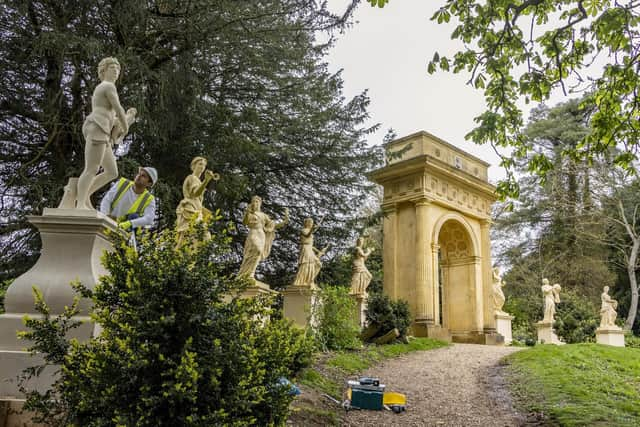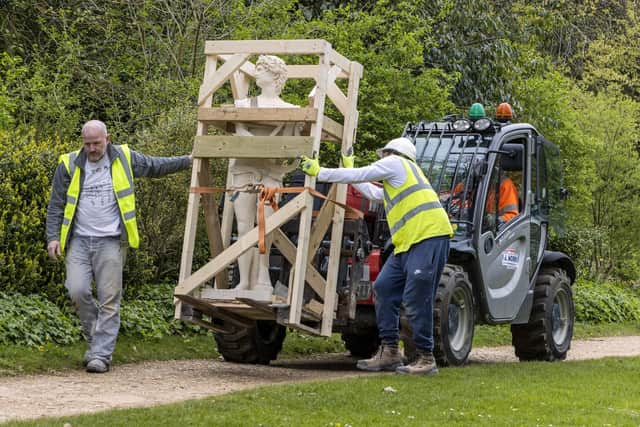Apollo has landed as statue installed in National Trust gardens near Buckingham
and live on Freeview channel 276
Apollo has landed at the National Trust’s Stowe Gardens, near Buckingham. After 33 years in the planning and making, a new statue of the Greek god has just been installed at the trust’s flagship estate.
The arrival of Apollo completes a group of 10 statues around Stowe’s Doric Arch, at the entrance to the area known as Elysian Fields. Apollo’s Nine Muses have been in situ since March 2020.
Advertisement
Hide AdAdvertisement
Hide AdConsidered the most handsome of all the Greek gods, Apollo has been the most elusive of all Stowe’s original statues to replace and it has taken years of research to reimagine the statue.


Stowe’s original Apollo was made of lead and attributed to sculptor van Nost. It is known to have been at Stowe by 1735, but an 1848 auction catalogue for the estate notes that the statue of Apollo had ‘long since been melted’.
Apollo was the Olympian god of many things, including sun and light, music and poetry, healing and plagues, archery and agriculture. Stowe’s Lyric Apollo was mainly concerned with music and poetry.
Through research and archaeological excavation, it is understood that, like many other statues at Stowe, Apollo and the Muses were moved around the garden, but their final location was around the Doric Arch.
Advertisement
Hide AdAdvertisement
Hide AdThe Stowe Apollo design was based on a composite interpretation of several surviving 18th-century statues, including an Apollo in the collection of Historic Environment Scotland and another in the Royal Collection.


Research was conducted by National Trust curator Gillian Mason and the statue was modelled in clay by Cliveden Conservation's award-winning stone sculptor Jem Hobbs, then moulded and cast in Cliveden Conservation’s specialist Norfolk workshop.
Gillian Mason said: “Stowe is a garden full of classical references and meaning. It’s a landscape built on myths, legends, historical characters and events, where over 100 sculptures once played a part in telling these stories.
"Bringing back statue groups like Apollo and the Muses to the gardens adds meaning and significance to this remarkable landscape.”
Advertisement
Hide AdAdvertisement
Hide AdRené Rice, head of decorative arts at Cliveden Conservation, said: "It has been a privilege for Cliveden Conservation to work in collaboration with the National Trust on the completion of the statuary group ‘Apollo and the Nine Muses’ for Stowe's 18th-century landscape garden.”